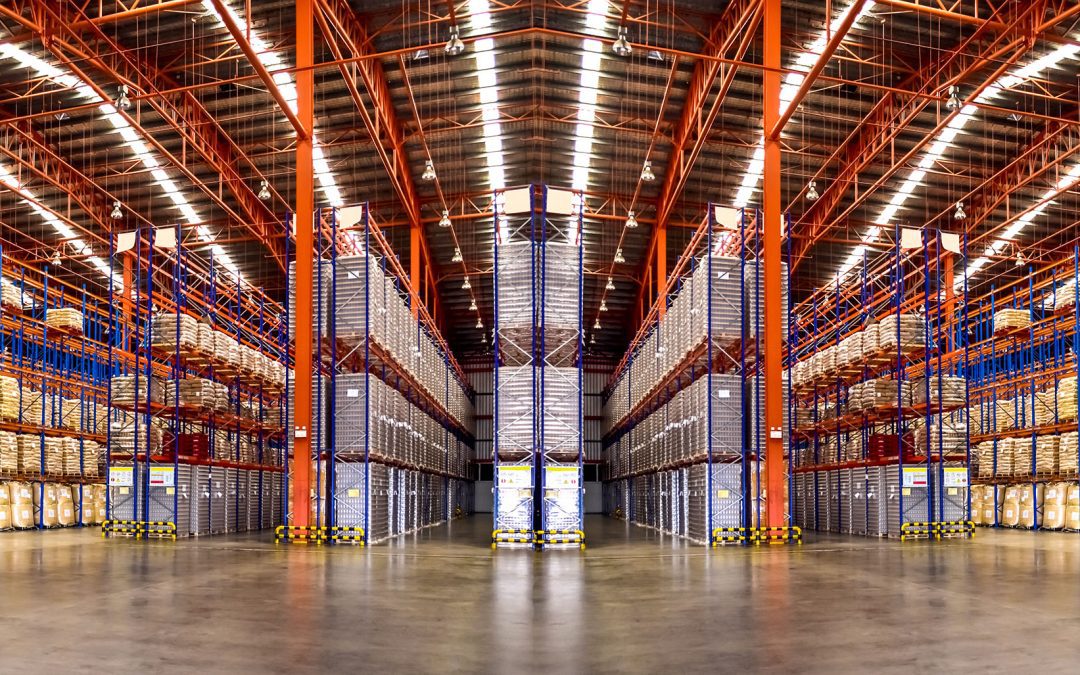The U.S. ecommerce industry is estimated to exceed $1.3 trillion in sales by 2025. If you run an ecommerce business, this is a positive sign that you’ll need to prepare for increasing demand over the next few years.
As an ecommerce operator, your warehouse is a vital part of your supply chain. If you want to be able to meet increasing consumer demands or trying to expand, you’ll need to look closely at your warehouse performance.
Effective warehouse management for ecommerce businesses can make all the difference to order capacity,
customer satisfaction, revenue, and growth.
You may already be using a warehouse management system, or perhaps you’re trying to decide between an ERP and WMS for your ecommerce business. We’re going to take a closer look at why you should be using a
comprehensive WMS to manage your warehouse and how to optimize your warehouse management for
greater customer success.
What is the difference between ERP and WMS?
While they are sometimes seen as interchangeable, there are key differences between an ERP and a WMS.
Enterprise resource planning (ERP) software is used to integrate the management of things like finances, operations, supply chain, reporting, manufacturing and human resources activities for a company. A warehouse management system (WMS) on the other hand is used to manage operations within your warehouse, such as controlling inventory and managing order fulfillment.
While both systems provide visibility and valuable data on business performance, the main difference is that WMS uses intelligent software and real-time data to optimize and improve your warehouse operations.
4 ways to better manage an ecommerce warehouse
1. Get full control of your inventory
Inventory management is critical in all warehouses, but even the smallest inventory discrepancy for ecommerce operators can be the difference between a lost sale and a satisfied customer. Having real-time inventory insights will allow you to better organize your warehouse, see stock levels and locations, and identify when you need to replenish inventory.
If you manage large order volumes, you don’t need the hassle of trying to manually determine where items are located, how many are left in stock, and what items are sold out.
A WMS will give you complete control over your inventory, with smart features like automated inventory replenishment and real-time inventory data so you can avoid running out of stock and disappointing customers. Integrating your WMS with your ecommerce store will also mean you can sync your inventory levels with the front end of your estore and automate inventory availability.
2. Optimize picking efficiency
Warehouses are no longer exclusively used for bulk order processing. The vast range of ecommerce models mean that warehouses now have to deal with smaller orders and even individual item processing. This is why efficient picking strategies are absolutely essential to managing a well-oiled ecommerce warehouse.
No matter whether you’re picking at the order level, or using automation to batch and wave orders, accurate and timely fulfillment are critical to a positive customer experience. On top of this, optimizing your picking and packing processes can lead to the most significant labor cost savings.
Rather than manually planning your pick paths as orders arrive, your WMS can automatically create the best paths for speed and efficiency. There are different types of picking methods, from wave and batch picking, to cart picking, and each have advantages depending on your order volume and warehouse layout. Having the visibility and filters to group orders by categories like warehouse zones, items, or carriers allows you to maximize labor time spent picking orders. Ensuring you
have a flexible WMS allows you to select and configure the right picking methods for your business.
3. Set up the right integrations
For the most efficient operations, your warehouse needs to plug into your ecommerce store or order management system so that there is a seamless path from online purchase to order dispatch. This path is supported by powerful software integrations, so it’s important to ensure you have WMS software that easily integrates with all of your ecommerce and order management systems.
Integrations are crucial to syncing your online store with warehouse inventory for full visibility. This can give you insight into important order metrics that can determine key business decisions. Integrations are also vital to the entire fulfillment journey, with shipping carrier integrations ensuring fast, accurate, and economical dispatch.
This gives you access to things like rate shopping so you can find the best shipping carrier for every order and cut costs.
4. Have strict quality control measures
As an ecommerce business, you’ll know that your customers are the be-all and end-all. The quality of your products and the speed of your delivery are the primary things consumers will be looking at. Any errors along the way, from faulty or incorrect items to dispatch delays, can harm customer loyalty. These types of mistakes can be exacerbated if you’re operating multiple warehouses or trying to scale up to a larger operation.
This is why it’s essential to have strict and consistent quality control processes in your warehouse. Barcode scanning throughout your warehouse operations, from scans on receiving to validated picking and packing, maximizes accuracy and allows you to achieve those high-quality standards.
By creating multiple checkpoints through the shipping workflow, you can reduce fulfillment errors and detrimental customer complaints.
If you’re running an ecommerce business and need a more powerful warehouse management system, speak to our team today about your ecommerce needs!



